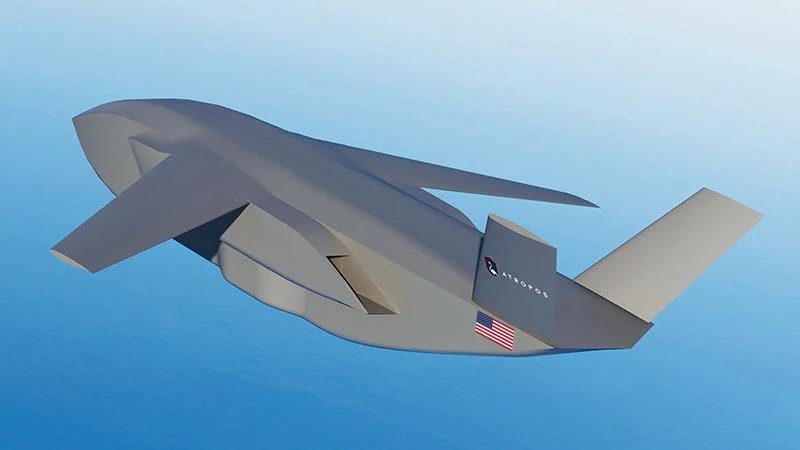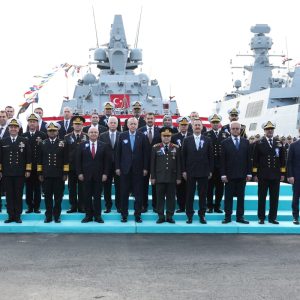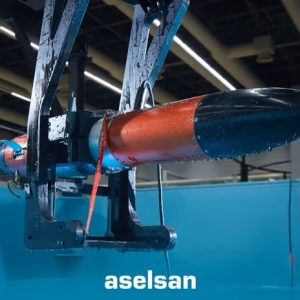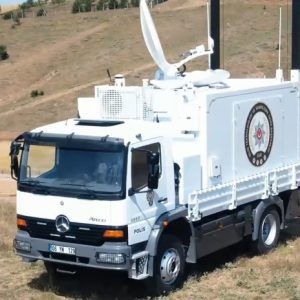
USAF Autonomous Airlifter Push
War games on a Taiwan crisis revealed a hard truth. Forward CCA hubs will struggle without resilient resupply. A USAF autonomous airlifter could close that gap. This article explains what that means, why it matters, and how Tacit Spear proposes to deliver it.
Why an autonomous airlifter now?
CCAs bring mass and tempo. However, every sortie still needs fuel, weapons and spares. The Mitchell Institute warns that southern Japan and the northern Philippines sit inside heavy missile threat rings. Therefore, legacy C‑130 and C‑17 sorties into those zones would face high risk. A smaller, runway‑agnostic, and autonomous shuttle offers another path. In short, logistics must disperse at the same scale as combat power.
Tacit Spear in brief: payload, range, basing
Designer Darold Cummings targets a C‑27J‑class payload of about 20,000 lb on three 463L pallets. In addition, the bay supports airdropped cargo and mine‑laying. A ferry range near 2,500 nm enables self‑deployment across the Pacific. Furthermore, twin embedded turbofans, swept wings and robust gear aim for 5,000‑ft unimproved strips. With sharp chines, forward‑swept inlets and canted tails, the airframe favors survivability in contested airspace, not commercial lineage.
From concept to an operating model
This aircraft does not replace C‑17s or C‑130s. Instead, it adds a new layer. Think small detachments based in the second island chain. When CCAs surge, autonomous airlifters pulse forward to austere strips with fuel bladders, palletized munitions and line‑replaceable units. As a result, the last tactical mile tightens. Moreover, the same bay can carry sensors or data‑link kits, turning some sorties into relay nodes.
Financing and fielding for speed
Atropos proposes about 80% private funding for development. The remainder would come from DoD RDT&E. After dual‑use airworthiness, the company plans an “as‑a‑service” offer. Consequently, much of the cost shifts from procurement to operations and maintenance. If the plan holds, experimentation could start earlier while a formal requirement matures.
Signals from China
China’s industry is moving too. The Air White Whale W5000 appeared last year. In May, the CH‑YH1000 flew with a payload near 1.5 tons. Notably, these steps show that large uncrewed lift is feasible. They also set a pace target for a USAF autonomous airlifter.

What changes if it works?
First, logistics mass improves. Many more short strips and roads become useful nodes. Second, campaign tempo rises. CCAs burn fuel and expend weapons fast; autonomous replenishment reduces dwell time. Third, survivability increases. Smaller signatures and lower unit cost permit bolder routing. Together, these effects create a resilient mesh that supports distributed airpower.
Technical insight: The 463L tri‑pallet bay standardizes load planning. Consequently, fuel, spares and palletized effects can move on the same sorties. Logistics and lethality share one pipeline.
Risks and open issues
Autonomy at scale. Detect‑and‑avoid and rough‑field landings need rigorous proof. Protection. Low altitude and small signatures help, yet ISR and long‑range fires remain dense in the theater. Cost realism. Private capital speeds work; military‑grade comms and cyber hardening still add weight and cost. Therefore, early service buy‑in is essential.
Complementing, not replacing, legacy lift
Large airlifters stay vital. They push bulk tonnage to main hubs. Then a USAF autonomous airlifter shuttles forward to small spokes under fire. Finally, tankers and theater airlift knit the system together. In practice, this tri‑layer mix may be the only way to sustain airpower at scale inside contested zones.
Other disruptive options on the table
USTRANSCOM and AFRL continue Rocket Cargo work for point‑to‑point heavy delivery. DARPA pursued the Liberty Lifter ekranoplan before the program ended in 2025. These efforts inform design trades. Even so, they do not replace a runway‑flexible, near‑term USAF autonomous airlifter.
Bottom line
Tacit Spear will not erase distance in the Pacific. Even so, it reframes the problem. By prioritizing survivable throughput over exquisite speed, it could turn many small airstrips into a resilient network. That is the kind of backbone a CCA force needs to fight and recover under attack.
Related on Defence Agenda: For team‑ing and autonomy in practice, see our MQ‑28A Ghost Bat analysis here.
References
- Aviation Week — Startup aims to deliver an autonomous airlifter for USAF by 2028
- Mitchell Institute — Logistics While Under Attack: Key to a CCA Force Design
- AFRL — Rocket Cargo Vanguard overview
- USTRANSCOM — Rocket Cargo statements (2021)
- DARPA — Liberty Lifter program status (completed 2025)
- Aviation Week — China’s Air White Whale W5000 rollout











